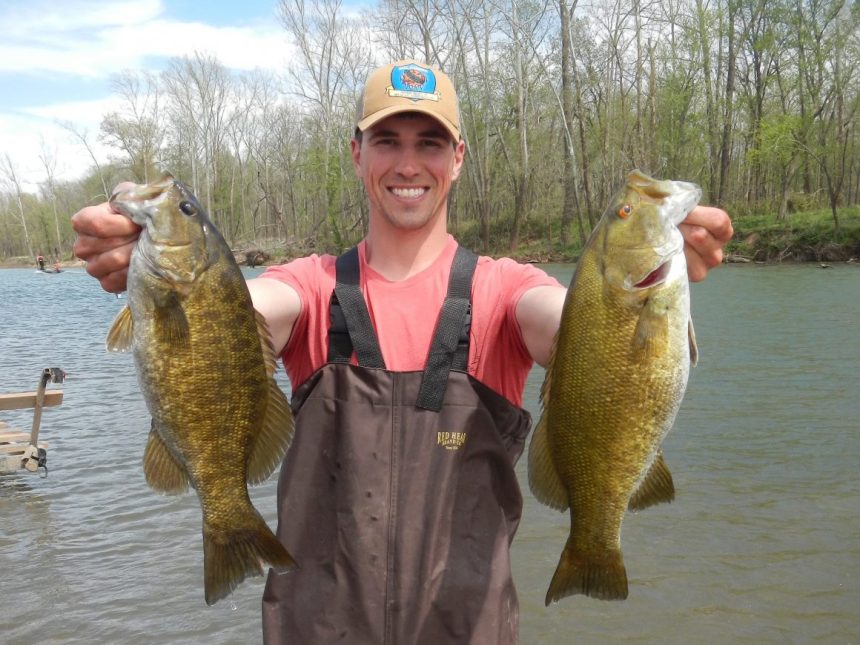This article originally appeared in Fishing Tackle Retailer on March 18, 2021, and was subsequently republished in the Fishing Wire, the Outdoor Wire, and in print in Outdoor Oklahoma magazine.
By Craig Springer, USFWS.
Anglers appreciate the arrowy rush of a smallmouth bass taking off with a streamer on a five-weight, ripping a twitching stickbait, or tugging on fat night crawler. No matter the bait, the tussle is nearly always the same: a hard strike followed by multiple midair head-shaking leaps. And here’s part of the marvel. The fight is bigger than the fish, like the hammer of a bantamweight’s punch. A ten-inch smallmouth angled from an eddy in water pillowing around a boulder can impress your senses.
To make better sense of how well stream-dwelling smallmouth grow over time, two Oklahoma Department of Wildlife Conservation stream biologists took a deep dive into data. Trevor Starks and Anthony Rodger know Oklahoma stream fisheries, but they looked beyond the confines of their state boundary to learn more about smallmouth bass age and growth in flowing waters. What they learned, they recently shared with other fisheries scientists through a paper published in the North American Journal of Fisheries Management.
Predictive models of age and growth have existed for lake-dwelling smallmouth bass for some time, but not so for those swimming in streams. Growth models help biologist determine population status, compare fisheries, and inform potential fishing regulations. Relying on a Sport Fish Restoration grant derived from excise taxes paid by fishing tackle manufacturers and on motorboat fuel, the biologists sought to fill the void.
The two made cold calls and email queries to smallmouth bass biologists in 12 other states. They sought age and growth information from both ear bones and scales. Biologists typically use these two means of measurements in determining age of fishes, examining growth rings left on these body parts. Each has its shortcoming: ear bones requires sacrificing the fish. Scales lack some reliability at certain fish sizes and can lead to misreading.
Starks and Rodger amassed more than 11,000 data points—the ages and growth records of smallmouth bass swimming in streams from Minnesota to New York to North Carolina—and their own Oklahoma smallmouth streams. With that immense amount of information derived from both ear bones and scales, the Oklahoma biologists developed mathematical models for both aging methods whereby biologists can predict fish size at a particular age and the estimated time required to reach a specific size.
Biologists charged with managing stream smallmouth bass have another reliable tool to inform management decisions for improved fisheries and fishing.
This industry excise tax-supported research is among hundreds of management and research grants related to black bass species across the country. Sport Fish Restoration grants fund commonplace annual population assessments of largemouth, smallmouth and spotted bass to the leading-edge work that recently identified new species of black bass in the Southeast U.S.

